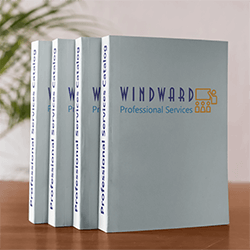⚠️ Windward Software has decided to end support for the Windward Payroll Module effective December 31, 2024. We sincerely regret any inconvenience that this decision might cause for your business. This decision was a difficult one. It is part of ongoing efforts to streamline the Windward Software product line and service offerings. Click here for more information.
Washington Labor and Industries (L&I) tax is generally paid by both the company and the employee. It is based on hours worked with different rates for different occupations being grouped according to risk classification. For a complete list of rates and risk classes you may refer to http://www.lni.wa.gov/.
Since this tax is not part of the system default taxes, there is a need to add this into the system as a custom tax. Let us consider the class code 0301-06 Agricultural sprinkler/irrigation systems as an example to demonstrate on how to setup this tax in Windward Payroll.
As of 2015, under class code 0301-06, the employer should contribute $1.09480 and withhold $0.30530 from the employee's pay for every hours worked.
Tax
Washington Labor and Industries tax is not currently set as a default tax within Windward Payroll. This tax needs to be configured locally and has to be updated locally.
Subtype Setup
- From the payroll main navigator, go to System Settings > System Settings > Subtype Setup.
- From the IDAT Identifier dropdown menu, select “Tax”. Then enter freely the Code and Description of the new subtype.
Calculation Setup
- Going back to the System Settings window, click the [Calculation Setup] button. From the IDAT Identifier drop menu, select “Tax” then click the [New] button in the toolbar.
- Enable the following check boxes:
- Use Amount? and label as “Hourly Rate”
- Use T4 Box? (5 boxes) and label as “W2 Box”
- Use Expense Ledger?
- Use Liability Ledger?
- Use Rate Table?
- Use Formulas?
- In the Employee Contribution Formula, enter the formula:
- (<IItemPay>/<Unit>)*<Amount[<AnnualPeriods>,<Subtype[RATE]>]>
- In the Company Contribution Formula, enter the formula:
- (<IItemPay>/<Unit>)*<Formula[<AnnualPeriods>,<Subtype[RATE]>]>
- In the Rate Sub Type grid, enter freely a name for the rate table. In this example, it should be RATE to compliment the formula from steps 6 and 7. Once all information are in place, click the [OK] button to save.
Custom Tax
- From the payroll main navigator, go to Company Setup > Taxes.
- In the Effective Date field, set the date for which the tax that you are about to add would likely to take effect.
- Click the [Add] button to invoke the Add New Tax window.
- Since we are about to create a custom tax, click the [Create] button and click [Yes] to the confirmation dialogue.
- Enter the Name, Abbreviation, State, Sub Type (from #2), Calculation Type (from #3), and Effective Date and click [OK].
- Type Tab: Enter the Expense and Liability Ledgers for posting and just leave the Hourly Rate as it is.
- Then click the [Rates…] button to open the rate table for this tax. Just click [Yes] on the confirmation dialogue to proceed with the creation of rate table.
- Set the range of 1 to 365 in the Salary Start and End columns. This will consider all of the pay periods.
- In the <Amount> column, enter the employee withholding rate which is in this example as 0.30530.
- Enter the employer withholding rate in the <Formula> column, which in this case is 1.09480.
- Then exit out of the rate table to go back to the Type tab by clicking the “X” icon at the upper right most corner of the window and navigate to the Details tab by clicking the [Next] button.
- Details Tab: Enter the payee of this payroll item in the Remittance Payable to field and configure the W2 Boxes for reporting purposes. Set the Usage Control to “Adjust Rates Allowed” and click [OK] to save and exit.
Attach the Tax to an Income
To attach this tax to an income item, go to the Incomes tab of the company setup and edit the income item. Through the Taxes tab of the payroll item, toggle the payroll tax item to be attached the income.
Pay Run
In an employee's worksheet, once the number of hours will be entered, L&I tax will then be calculated. This tax is calculated based on the number of hours rendered for work by the employee at a rate specified by the Labor and Industries.
However, for a salaried employee, a required number of hours within a period will need to be specified or set in the income item of the specific employee.




